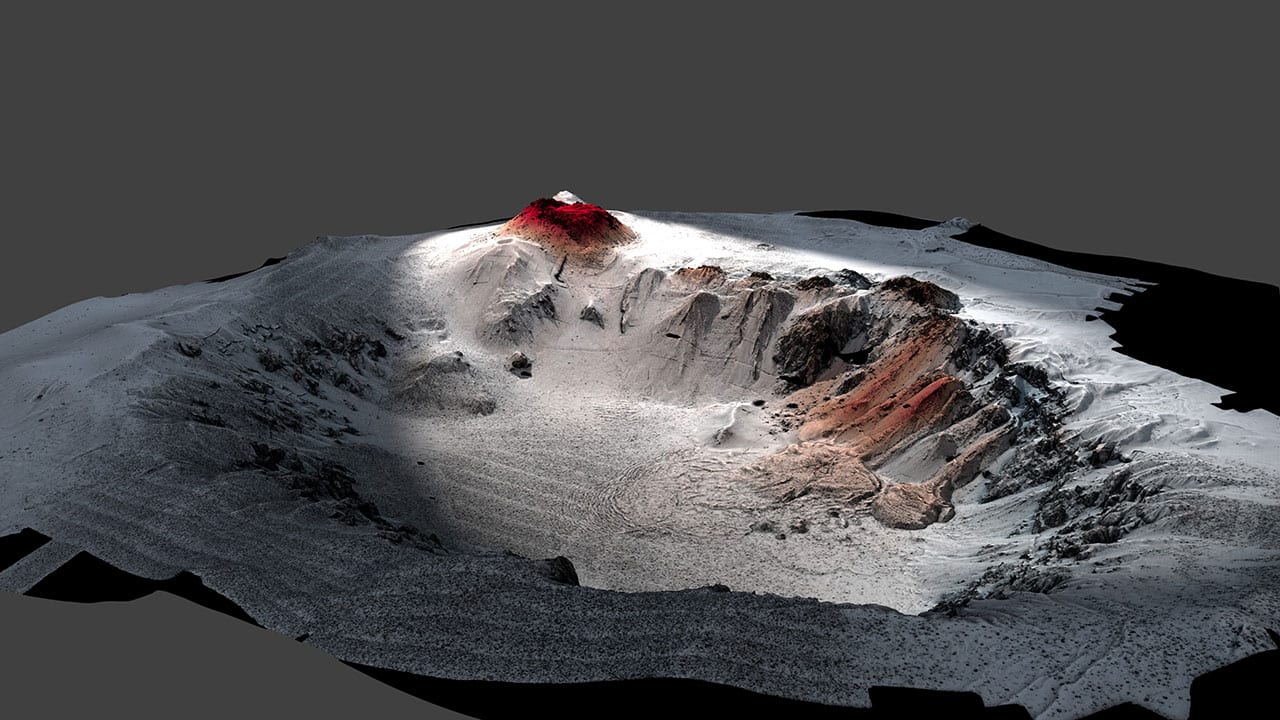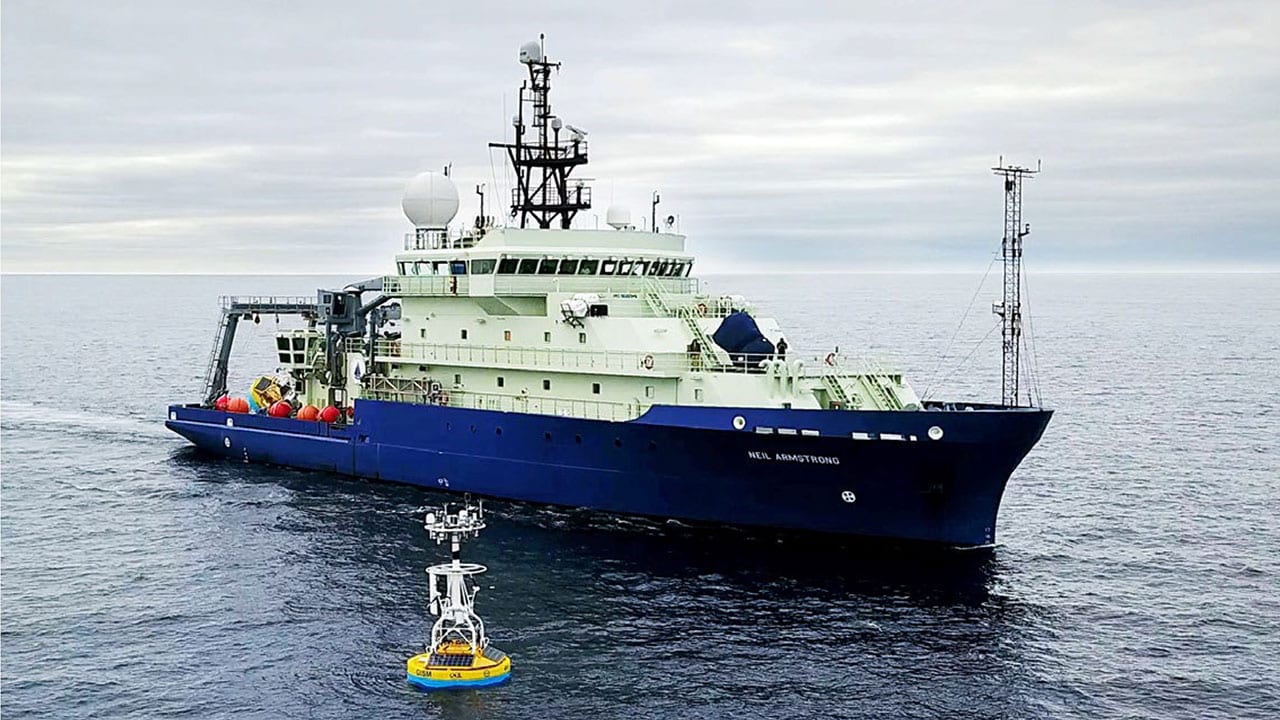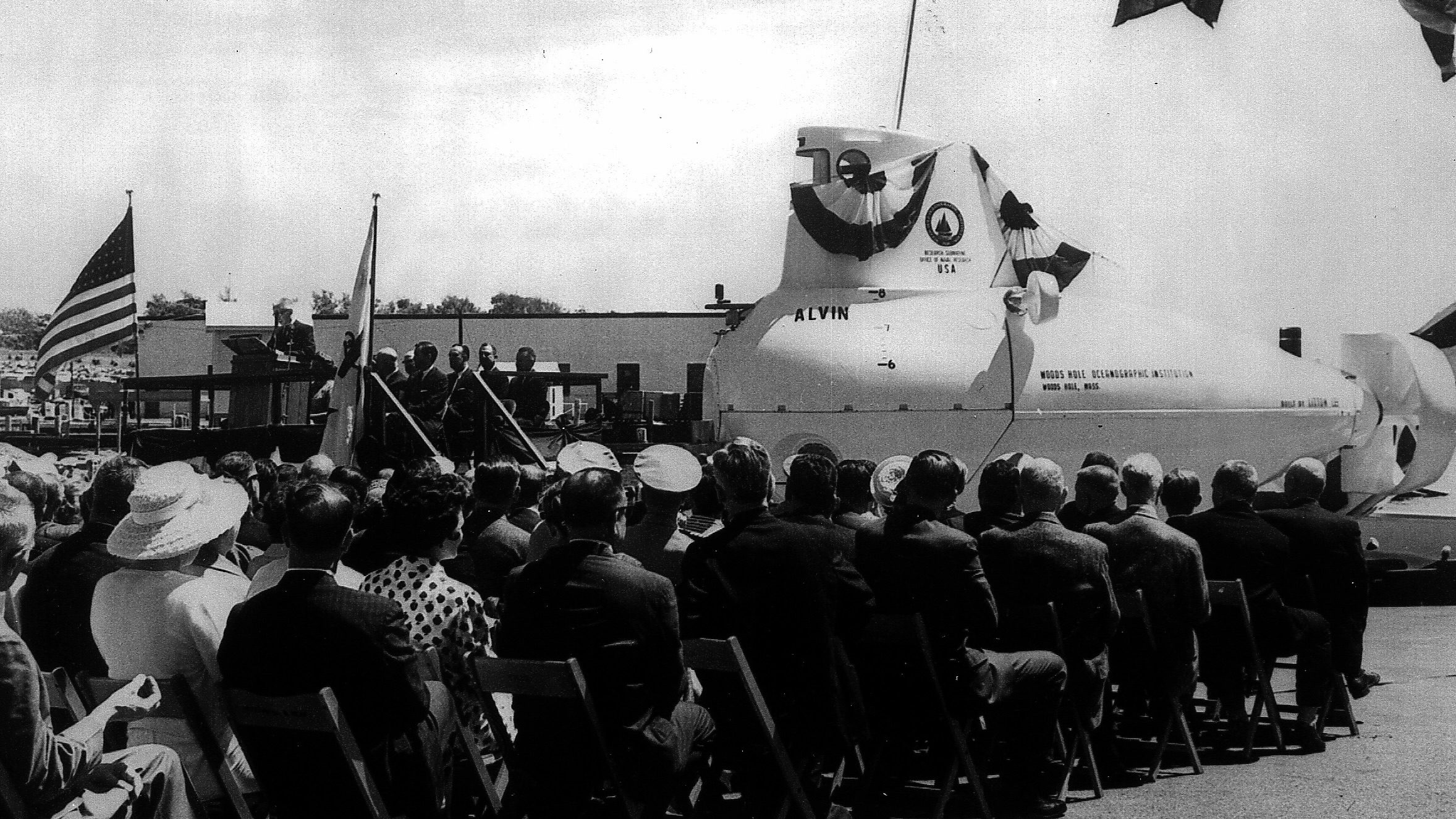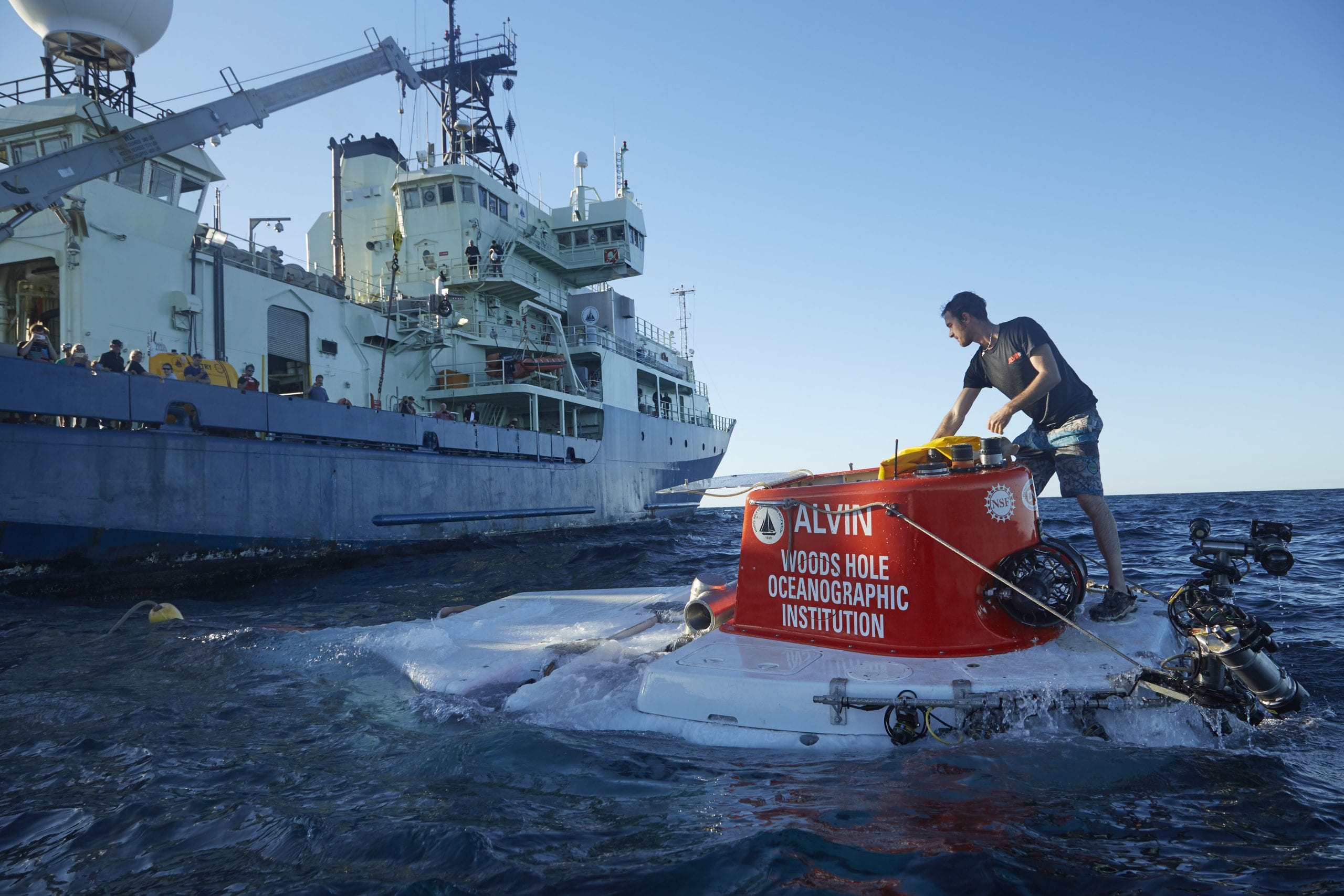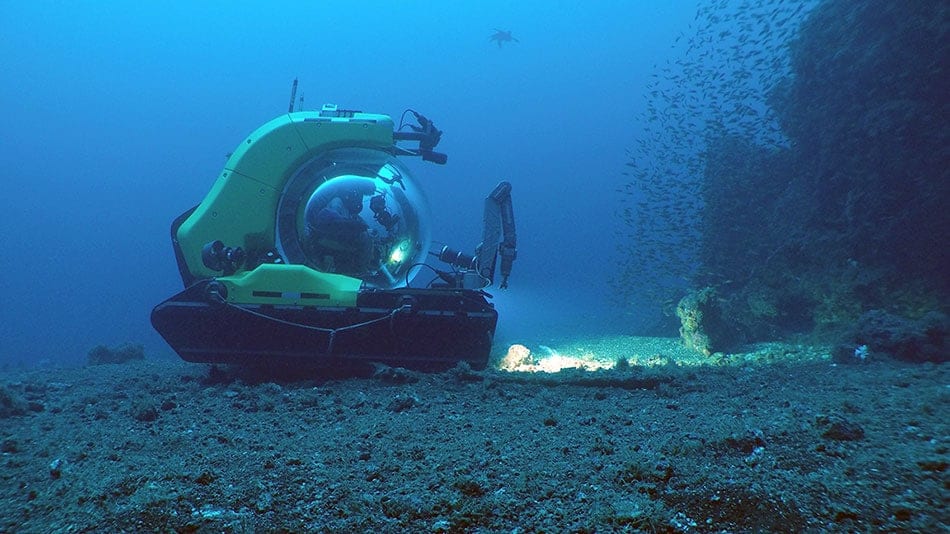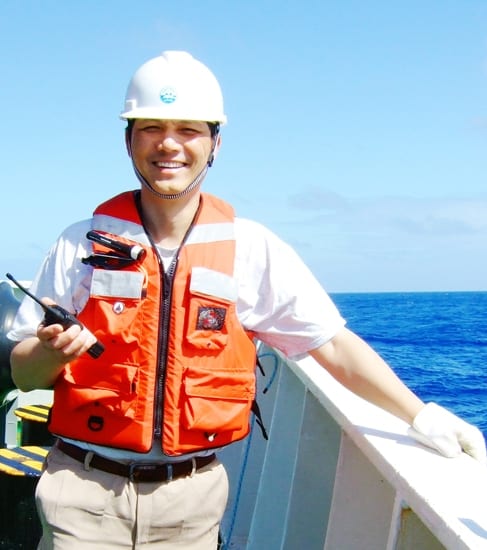News Releases
A Close-up Look at a Rare Underwater Eruption
A new paper published January 10, 2018, in the journal Science Advances describes the first up-close investigation of the largest underwater volcanic eruption of the past century. The international research team led by the University of Tasmania and the Woods Hole Oceanographic Institution (WHOI) used the autonomous underwater vehicle (AUV) Sentry and the remotely operated vehicle (ROV) Jason to explore, map, and collect erupted materials from the Havre volcano during a 2015 expedition. They found that the eruption was surprising in many ways.
Read MoreScientists Find Active Underwater Volcano East of Samoa
Marine geologists from the Woods Hole Oceanographic Institution (WHOI) and the Scripps Institution of Oceanography (SIO) have confirmed the existence of an active underwater volcano east of Samoa. The volcano, recently named VailuluA?u by local students, is located about 28 miles east of TaA?u Island and rises more than 16,400 feet from the seafloor to within 2,000 feet of the ocean surface. The scientists found billowing “smoggy” water in the summit and extending out for more than five miles.
Read MoreNSF Awards Contract to Group Led by WHOI to Continue Operation of Ocean Observatories Initiative
The National Science Foundation (NSF) announced that it has awarded a coalition of academic and oceanographic research organizations a five-year, $220 million contract to operate and maintain the Ocean Observatories…
Read More‘Dark Oxidants’ Form Away from Sunlight in Lake and Ocean Depths, Underground Soils
oxidants, cells, oxygen, bacteria, superoxide, Colleen Hansel, Peter Andeer, Tong Zhang
Read MoreVolcanic Activity Discovered at Samoan “Hot Spot”
Scientists from Woods Hole Oceanographic Institution and Scripps Institution of Oceanography have discovered “strong evidence” for current volcanic activity at the Vailulu’u summit east of Samoa.
Read MoreSixty Years of Deep Ocean Research, Exploration, and Discovery with Human-Occupied Vehicle Alvin
In June 1964, the world’s first deep-diving submersible dedicated to scientific research was commissioned. What have we learned over the past 60 years?
Read MoreInstitute of Electrical & Electronics Engineers Honors WHOI Scientist
The Institute of Electrical and Electronics Engineers (IEEE) elected Dana Yoerger as a 2021 fellow for the development of autonomous underwater vehicles for deep-ocean exploration and science.
Read MoreWHOI reveals upgrades to iconic submersible Alvin
One of the world’s most prolific research submersibles will put 99% of the ocean floor within reach of science community when it relaunches in 2021
Read MoreGalapagos Expedition Reveals Unknown Seamounts, New Species
During a three-week expedition in August, an international team led by the Woods Hole Oceanographic Institution (WHOI), in partnership with the Charles Darwin Foundation for the Galápagos Islands and in close collaboration with the Galápagos National Park Directorate, conducted the first scientific expedition to map and characterize the seamounts on the Galápagos platform and the diverse marine life that these underwater mountains support.
Read MoreDedication Ceremony Held for New Laboratory
WHOI President and Director Susan Avery and Director of Research Larry Madin were joined by National Institute of Standards and Technology (NIST) Deputy Director Willie May at a dedication ceremony Sept. 20 for the new Laboratory for Ocean Sensors and Observing Systems. The ceremonial ribbon cutting took place by the state-of-the-art facility’s high bay entrance, located on the Institution’s 160-acre Quissett campus.
WHOI received an $8.1 million grant from NIST in 2010 to fund construction of the new scientific research facility, as part of the American Recovery and Reinvestment Act. WHOI contributed $4 million to the project. The 27,000-square-foot, “green”-designed building will provide space for a major effort to create long-term ocean observatories.
Read MoreWHOI scientists find ancient asphalt domes off California coast
They paved paradise and, it turns out, actually did put up a parking lot. A big one. Some 700 feet deep in the waters off California?s jewel of a coastal resort, Santa Barbara, sits a group of football-field-sized asphalt domes unlike any other underwater features known to exist. About 35,000 years ago, a series of apparent undersea volcanoes deposited massive flows of petroleum 10 miles offshore. The deposits hardened into domes that were discovered recently by scientists from the Woods Hole Oceanographic Institution (WHOI) and UC Santa Barbara (UCSB).
WHOI contributes to special seamount issue of Oceanography magazine
Woods Hole Oceanographic Institution (WHOI) biologist Timothy M. Shank is among five guest editors of a newly published special edition of the research journal Oceanography on the oceans? seamounts, submerged isolated mountains in the sea. Shank is also a contributor to the special Oceanography edition.
Read MoreJian Lin Named a Fellow of the American Association for the Advancement of Science
Jian Lin of the Woods Hole Oceanographic Institution (WHOI) has been named a fellow of the American Association for the Advancement of Science (AAAS). Election as a fellow is an…
Read MoreArctic Websites to Take Students, Museum Visitors, and Web Surfers to the Ends of the Earth
Beginning April 18, the Woods Hole Oceanographic Institution (WHOI), in partnership with eight museums across the United States, will bring the excitement of polar research and discovery to students, teachers,…
Read MoreMajor Caribbean Earthquakes and Tsunamis a Real Risk
A dozen major earthquakes of magnitude 7.0 or greater have occurred in the Caribbean near Puerto Rico, the U.S. Virgin Islands and the island of Hispaniola, shared by Haiti and…
Read MoreScientists Report New Type of Mid-Ocean Ridge in Remote Parts of the Earth
Scientists from the Woods Hole Oceanographic Institution (WHOI) have identified a new type of ocean ridge that is spreading so slowly that Earth’s mantle is exposed over large regions of the sea floor. Their findings of a new ultraslow class of ridge, reported in the November 27 issue of the journal Nature, offer a major change in thinking about the formation of the great crustal plates that make up the surface of the earth.
Read MoreScientists Explore New England Seamounts for Clues to Climate Change
Scientists are exploring the New England Seamounts, a chain of extinct, undersea volcanoes about 500 miles off the east coast of North America, searching for clues to climate change in deep sea corals. The public can join the expedition via the web at http://www.divediscover.whoi.edu.
Read MoreOceanographer Takes Cable Industry on Journey into the World’s Oceans
(Washington, DC) Robert B. Gagosian, Director of the Woods Hole Oceanographic Institution (WHOI), told the Washington Metropolitan Cable Club today that new technologies are completely changing the way oceanographers do ocean science, and that many problems facing society today can be solved if policymakers and others use this knowledge and technology wisely.
Read More
